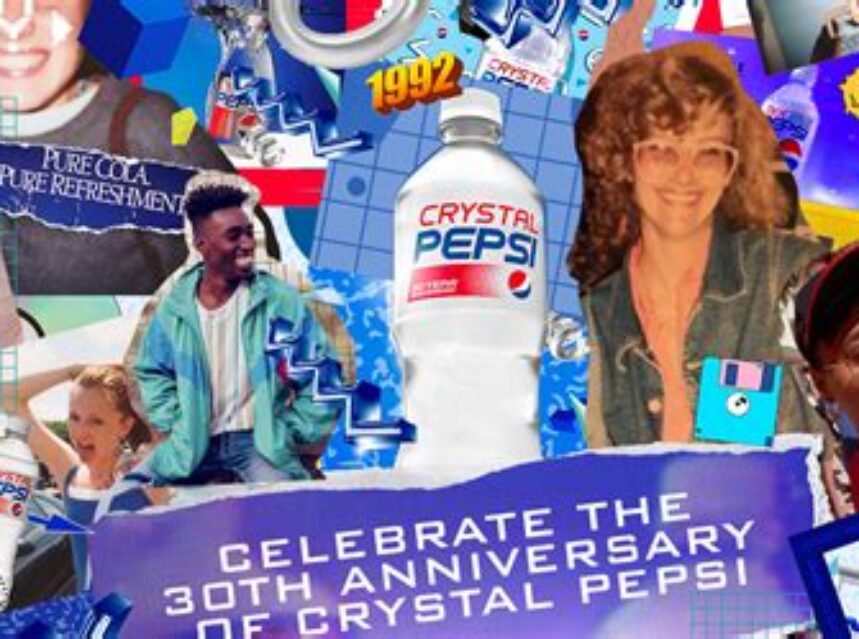Leveraging Nostalgia in Marketing: Building Emotional Connections

Learn how to leverage nostalgia for powerful marketing campaigns. Understand triggers, craft resonant messages, and measure effectiveness. Integrate nostalgiaIn today’s fast-paced world, marketers are constantly seeking new ways to capture the attention and loyalty of their target audience. One powerful tool that has proven to be effective in building emotional connections with consumers is nostalgia. By tapping into memories and emotions from the past, marketers have the ability to create a sense of familiarity and comfort that resonates with their audience on a deeper level. In this blog post, we will explore the psychological impact of nostalgia, how to identify nostalgic triggers in audiences, and the art of crafting messages that evoke emotional resonance. Additionally, we will discuss the importance of integrating nostalgia into modern marketing campaigns and provide insight into measuring the effectiveness of nostalgic appeals. Join us as we delve into the world of leveraging nostalgia in marketing and learn how this timeless strategy can help strengthen your brand’s connection with consumers.
Understanding Nostalgia’s Psychological Impact
Nostalgia is a powerful emotion that can have a profound impact on our psychological well-being. It is defined as a sentimental longing or wistful affection for the past, typically for a period or place with happy personal associations. This feeling of nostalgia can be triggered by a variety of stimuli, such as certain smells, music, or familiar locations.
Research has shown that nostalgia can have both positive and negative effects on individuals. On one hand, it can provide a sense of comfort and stability, as well as a feeling of connectedness to others. On the other hand, it can also lead to feelings of sadness or yearning for the past, especially if the individual feels that those times were better than their current situation.
Understanding the psychological impact of nostalgia is crucial for marketers and advertisers, as it can be a powerful tool for creating emotional connections with audiences. By tapping into nostalgic triggers, brands can evoke strong emotions and build long-lasting relationships with consumers.
Furthermore, psychologists believe that indulging in nostalgia can provide a sense of meaning and continuity in life, as it allows individuals to reflect on their past experiences and reminisce about happy memories. This can be particularly beneficial for individuals who are facing difficult times or undergoing significant life changes.
Identifying Nostalgic Triggers in Audiences
Nostalgia is a powerful emotion that can be used to connect with audiences on a deep, emotional level. Identifying the triggers that evoke feelings of nostalgia in audiences is crucial for marketers and advertisers looking to create impactful campaigns.
One of the key nostalgic triggers is music. Certain songs or musical styles can transport individuals back to a specific time or place in their past, evoking intense feelings of nostalgia. By incorporating music from a particular era into a campaign, marketers can tap into this powerful trigger and create a strong emotional connection with their audience.
Another trigger for nostalgia is cultural references. Whether it’s a specific fashion trend, a popular film or television show, or an iconic brand from the past, cultural references can instantly transport individuals back to a different time in their lives. By incorporating these references into their messaging, marketers can evoke strong feelings of nostalgia in their audience.
Personal memories and experiences are also powerful triggers for nostalgia. Whether it’s a smell, a taste, or a specific location, personal experiences from the past can evoke strong emotions in individuals. By crafting messages that tap into these personal triggers, marketers can create a deep and lasting connection with their audience.
Crafting Messages for Emotional Resonance
In the world of marketing and advertising, crafting messages for emotional resonance is a crucial and powerful tool. By appealing to the emotions of their target audience, marketers can create a deeper connection and leave a lasting impact. Understanding the psychology of nostalgia and its impact on emotional responses is key to creating messages that resonate.
When crafting messages for emotional resonance, it’s important to identify nostalgic triggers that are relevant to the target audience. By tapping into familiar experiences, products, or cultural references, marketers can evoke feelings of nostalgia that create a sense of connection and longing.
Integrating nostalgia in modern campaigns can be a highly effective way to craft messages for emotional resonance. Whether it’s through visuals, music, or storytelling, incorporating elements that harken back to the past can evoke strong emotional responses and create a sense of familiarity and comfort.
Measuring the effectiveness of nostalgic appeals in crafting messages for emotional resonance is essential for understanding the impact of these strategies. Through data analysis and consumer feedback, marketers can refine their approaches and create messages that truly resonate with their target audience.
Integrating Nostalgia in Modern Campaigns
Nostalgia is a powerful emotion that can be effectively used in modern marketing campaigns to connect with audiences on a deep level. By leveraging the emotional resonance of nostalgia, marketers can create campaigns that not only capture attention but also elicit a strong response from consumers. In today’s fast-paced world, where consumers are constantly bombarded with new products and messages, integrating nostalgia into modern campaigns can provide a refreshing and impactful way to cut through the noise.
One of the key strategies for integrating nostalgia into modern campaigns is to identify nostalgic triggers that resonate with the target audience. This involves understanding the cultural and historical references that hold meaning for the audience and incorporating them into the campaign in a meaningful way. Nostalgic triggers can vary widely depending on factors such as age, socio-economic background, and geographical location, so it’s important for marketers to conduct thorough research to ensure that the nostalgic elements resonate with the intended audience.
Another important aspect of integrating nostalgia into modern campaigns is crafting messages that effectively tap into the emotional power of nostalgia. This can involve using storytelling techniques that evoke memories of the past, incorporating vintage elements into visual design, or creating campaigns that reference popular cultural touchstones of a bygone era. By crafting messages that authentically capture the essence of nostalgia, marketers can create a deep emotional connection with consumers that goes beyond the surface level of traditional advertising.
Measuring the effectiveness of nostalgic appeals is another crucial aspect of integrating nostalgia into modern campaigns. This involves conducting thorough market research and using analytics to track consumer response to nostalgic elements in a campaign. By analyzing consumer engagement, sentiment, and purchase behavior, marketers can gain valuable insights into the impact of nostalgia on modern campaigns, allowing for further refinement and improvement of future campaigns.
Measuring the Effectiveness of Nostalgic Appeals
In today’s marketing world, nostalgia has proven to be a powerful tool in capturing the attention and emotions of audiences. Brands often utilize nostalgia as a way to connect with their consumers on an emotional level, reminding them of past experiences and creating an instant sense of familiarity. However, the question arises – how effective are these nostalgic appeals in influencing consumer behavior and driving sales?
One way to measure the effectiveness of nostalgic appeals is to conduct thorough market research and consumer surveys. By gathering data on consumer attitudes and purchasing behavior in response to nostalgic marketing campaigns, companies can gain valuable insights into the impact of these appeals on their target audience.
Analytics plays a crucial role in evaluating the success of nostalgic appeals. Tracking website traffic, social media engagement, and sales conversion rates following the launch of a nostalgic campaign can provide measurable data on its impact and effectiveness.
Furthermore, customer feedback and reviews can offer valuable qualitative insights into how consumers perceive and respond to nostalgic marketing efforts. Understanding the emotional connection and resonance that nostalgic appeals create can provide important feedback on their effectiveness in driving consumer engagement and brand loyalty.



